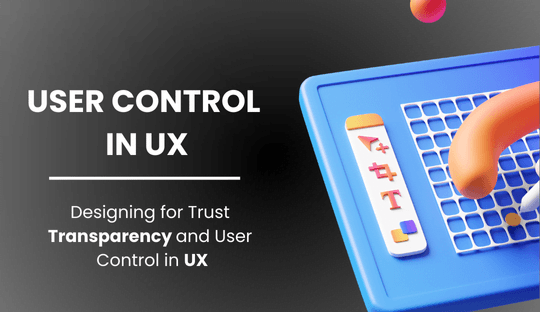
Designing for Trust: Transparency and User Control in UX
In today’s digital age, trust is paramount for businesses striving to build strong, lasting relationships with their users. At Flykez CO, a leading creative brand company in Latvia, we understand that transparency and user control are critical components in creating a reliable and engaging user experience (UX). By incorporating these elements into our UX design, we ensure that our clients’ websites are not only visually appealing but also trustworthy and user-centric.
The Importance of Transparency in UX Design
Transparency in UX design involves clear communication and openness about how user data is collected, used, and protected. It fosters trust by ensuring that users feel secure and informed when interacting with a digital platform. Here are some key ways to incorporate transparency into UX design:
- Clear Privacy Policies: Ensure that privacy policies are easily accessible and written in simple language. Users should understand what data is collected and how it is used without needing a legal degree to decipher it.
- Consistent Communication: Regular updates and clear notifications about changes in policies or terms of service help maintain trust. Avoid legal jargon and keep the communication straightforward.
- Open Data Practices: Allow users to see the data collected about them and provide options to manage their information. This practice not only builds trust but also complies with data protection regulations like GDPR.
Enhancing User Control in UX Design
User control in UX design empowers users to personalize their experience, enhancing satisfaction and trust. At Flykez CO, we focus on several strategies to achieve this:
- Customization Options: Allow users to customize their interface according to their preferences. This could include options for theme changes, layout adjustments, and content preferences.
- Adaptive UI: Design interfaces that adapt to the user’s device and preferences. An adaptive UI ensures a seamless experience across different platforms, enhancing user satisfaction.
- 3D Elements in UI: Incorporating 3D elements can make the UI more interactive and engaging. However, it’s essential to provide users with control over these elements, allowing them to enable or disable them based on their preferences.
Accessibility: A Pillar of Trustworthy Design
Accessibility is a crucial aspect of UX design, ensuring that digital platforms are usable by everyone, including people with disabilities. A focus on accessibility not only broadens the user base but also demonstrates a commitment to inclusivity and social responsibility.
- Accessible Navigation: Ensure that all users can navigate the website easily, regardless of their abilities. This includes providing keyboard navigation options and screen reader compatibility.
- Contrast and Readability: Use high contrast and readable fonts to ensure that all users, including those with visual impairments, can read the content comfortably.
- Alternative Text: Provide alternative text for images and multimedia content, ensuring that screen readers can convey the information effectively to visually impaired users.
Also read About Creating Seamless Experiences with Cross-Platform Design
Sustainable Design: Building for the Future
Sustainability in UX design involves creating digital platforms that are efficient, environmentally friendly, and long-lasting. Sustainable design practices not only reduce environmental impact but also resonate with environmentally conscious users.
- Efficient Code: Optimize code to ensure that websites load quickly and use minimal resources. This practice reduces energy consumption and enhances user experience by reducing wait times.
- Minimalistic Design: Adopt a minimalistic design approach, focusing on essential elements and reducing unnecessary clutter. This not only improves user experience but also reduces the energy required to load and display the content.
- Cross-Platform UI: Design interfaces that work seamlessly across different devices and platforms. A cross-platform UI reduces the need for multiple versions of the same application, saving resources and ensuring a consistent user experience.
Conclusion
At Flykez CO, we believe that trust is the cornerstone of any successful digital platform. By prioritizing transparency, user control, accessibility, and sustainable design, we create user experiences that are not only engaging but also reliable and trustworthy. As a leading creative brand company in Latvia, we are committed to delivering website design and development services that meet the highest standards of UX design, ensuring our clients can build strong, lasting relationships with their users.
For more information about our services, visit our website at www.flykez.com. Let Flykez CO help you design a digital experience that your users can trust and love.
